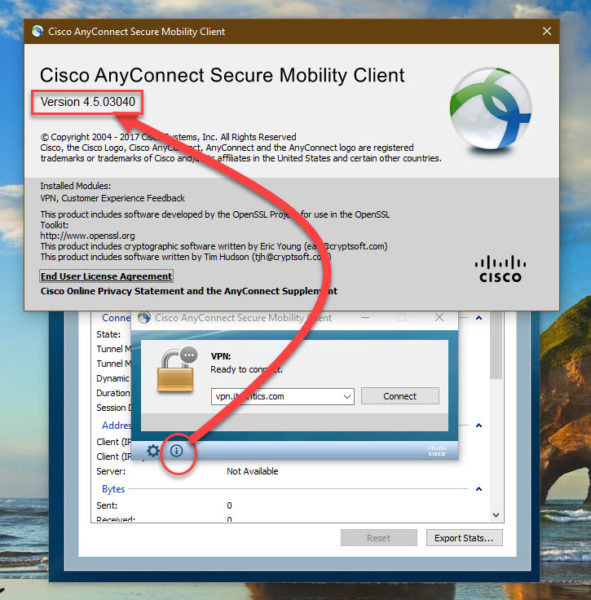

However, the MX supports the application and enforcement of policies to An圜onnect users on authentication. For example, if users are in different VLANs and access policies are not enforced somewhere, users could access anything.Īn圜onnect on the MX does not support multiple VLANs or address pools for Client VPN users. What segments users from talking to each other or other network resources is the presence and the enforcement of access rules. From a Client VPN standpoint, multiple subnets or separate VLANs do not provide access control in itself. While some administrators use multiple address pools to segment users, others use VLAN tagging to existing subnets. The need for access control over remote access connections cannot be over-emphasized. This can be enabled manually or via the An圜onnect profile.Īfter connection, the user should see their local network subnet added as a non secure routes (destinations that should be accessed locally not via the VPN tunnel) Configure the Client: Enable Allow local LAN Access on the An圜onnect Client. This will cause the An圜onnect client to automatically exclude traffic destined for the user's local network from going over the tunnel.Ģ. Configure the MX: Select " Send all traffic except traffic going to these destinations" option on the Dashboard and configure a 0.0.0.0/32 route.

Local LAN access will not work if both conditions are not satisfied.ġ. To enable local LAN access, two things need to be done.
#CISCO VPN CLIENT FREE DOWNLOAD FULL#
For example, a client that is allowed local LAN access while connected to the MX in full tunnel mode is able to print to a local printer at home, while other traffic flows through the tunnel. Local LAN access may be desired when Full tunneling is configured ( Send all traffic through VPN), but users still require the ability to communicate with their local network. You can send all traffic through VPN, all traffic except traffic going to specific destinations, or only send traffic going to specific destinations.ĭefault group policy: This is used to apply a default group policy to all connecting An圜onnect clients. This domain name only applies to tunneled packets.Ĭlient routing: This is used to specify full or split-tunnel rules pushed to the An圜onnect client device. RADIUS time-out: This is used to modify the RADIUS time-out for two-factor authentication and authentication server failover.Īn圜onnect VPN subnet: This specifies the address pool used for authenticated clients.ĭNS name servers: This specifies the DNS settings assigned to the client.ĭNS suffix: This specifies the default domain name or DNS suffix passed to the An圜onnect client to append to DNS queries that omit the domain field. Group policy with RADIUS Filter-ID: This is used to enable dashboard group policy application using the filter passed by the RADIUS server. This configuration is only required if you need to authenticate client devices with a certificate.Īuthentication Type: This is used to specify authentication with Meraki Cloud, RADIUS, or Active Directory. Profile update: This specifies the An圜onnect VPN configuration profile that gets pushed to the user on authentication.Ĭertificate authentication: This is used to configure the trusted CA file that is used to authenticate client devices. To disable the log-in banner simply leave the banner field blank. If configured, a connecting user must acknowledge the message before getting network access on the VPN. Log-in banner: This specifies the message seen on the An圜onnect client when a user successfully authenticates. You can change this hostname by following the instructions here.Īn圜onnect port: This specifies the port the An圜onnect server will accept and negotiate tunnels on. The DDNS hostname is a prerequisite for the publicly trusted certificate enrollment. This hostname is a DDNS host record that resolves to the Public IP address of the MX. Hostname: This is used by Client VPN users to connect to the MX. The following An圜onnect VPN options can be configured: To enable An圜onnect VPN, select Enabled from the An圜onnect Client VPN radio button on the Security Appliance > Configure > Client VPN > An圜onnect Settings tab. The automatic DDNS hostname certificates may not suffice. If the MX is in HA mode with a virtual IP and behind a NAT device, we recommend using the custom certificates feature to enable you manage your certificates and DNS records.


 0 kommentar(er)
0 kommentar(er)
